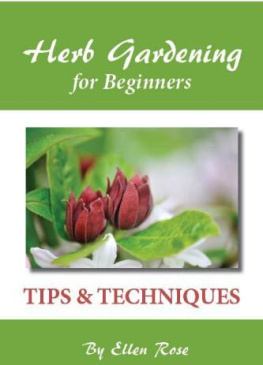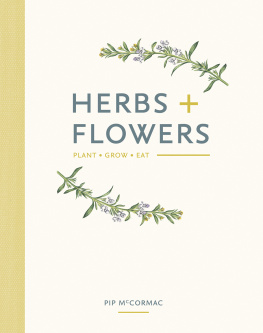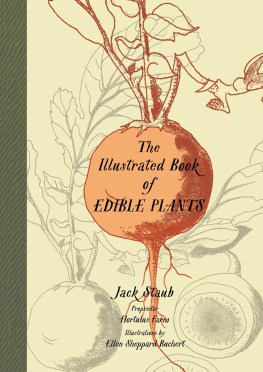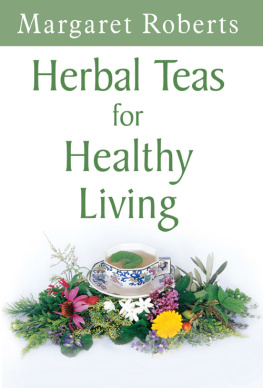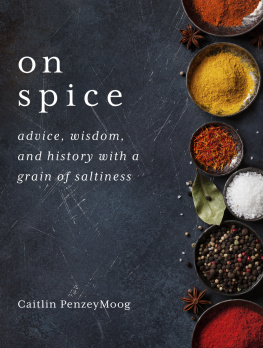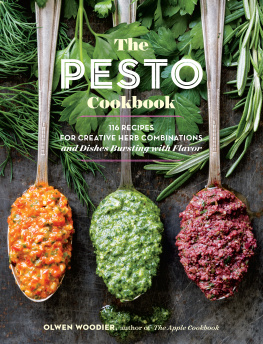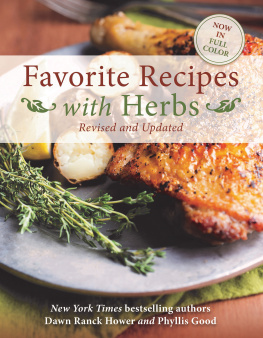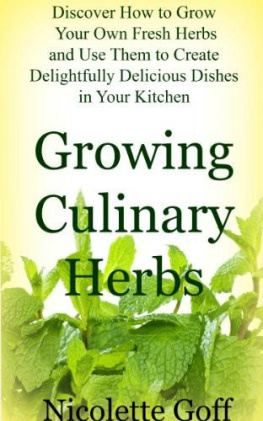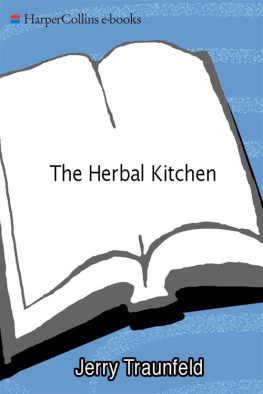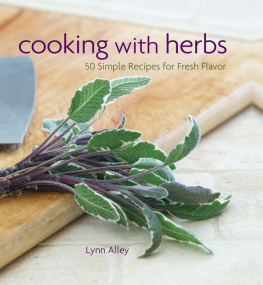Herb Gardening for Beginners: Tips & Techniques
By Ellen Rose
Table of Contents
Introduction
For beginners, the idea of starting a herb garden can be a bit daunting. In addition to dirt and grime, there is time involved, perspiration, and initial cost to contend with.
Offsetting these potential drawbacks are just as many reasons to start right away. A well-tended herb garden beautifies its surroundings, enveloping the air with a fresh and appealing aroma. Herbs grown are organic (e.g. no pesticides in your salad), less expensive than at the store, freshly available and filled with healing properties. A power-packed source of vitamins and minerals, fresh herbs taste better and have more nutritional value than their dried store bought counterparts.
The exercise involved in growing a herb garden is good for the body, and the revitalizing that comes from gardening is good for the soul. Many herb gardeners enjoy sharing fresh herbs with family and friends, while others find that gardening is just plain fun.
This handy little guide will give you even more reasons to start a herb garden. With pictures, helpful information on the cooking and medicinal benefits of herbs, and a 1-2-3 guide to growing each particular herb, its packed with useful information designed to help you enjoy the revitalizing and refreshing pleasure of growing your own herbs.
Ellen Rose
Cooking, Medicinal, and Growing Information by Herb
Allspice

Cooking applications: Similar to cinnamon, nutmeg, and cloves in flavor, Allspice can be used in both sweet and savory ways. It tastes great with beef, complements curry, and is extremely tasty in apple muffins or just about any recipe that contains apples. This herb can be very strong, so its best to test smaller amounts until you get the desired flavor.
Medicinal qualities: Allspice is a popular ingredient in Mexican and Central American dishes. Ground allspice has a strong, spicy taste and a sweet, aromatic fragrance. Much like black peppercorns, allspice berries are often used to improve digestion. The herbs active ingredient contains anti-inflammatory and anti-flatulent properties, and the essential oils are effective as an antiseptic. Furthermore, allspice is a good source of vitamins, minerals and antioxidants like vitamins A and C.
Best Conditions for Growing Allspice
Preferred Soil: Loose and well-moistened soil with good drainage is best (clay does not work well.)
Sunlight requirements: Direct sunlight not required, can grow in areas with partial shade.
Temperature requirements: Grows best in areas where the temperature remains constant at about 26 degrees Celsius.
Tips for Growing
Soil Preparation: Fertilize the soil with tropical plant fertilizer mixed 30-10-10, and repeat the fertilization every 3-5 weeks.
Planting: Plant the tree where the requirements for soil, sunlight, and temperature (as listed above) can be met. If you are planting allspice trees outside, plant them at least 18 feet apart. The best time to plant is between spring and summer.
Watering: Keep the tree well-watered. Letting it dry out will negatively impact growth.
Harvesting: When the tree is fully grown (about 40 feet high) the berries may be harvested. The berries ripen in late summer, and when they do, they begin to lose their aroma. The best time to harvest the allspice berries is before the aroma is gone.
Anise

Cooking applications: With a flavor similar to licorice, Anise is a common ingredient in Scandinavian, East Indian, Moroccan, and Middle Eastern cuisine. It is also frequently used for flavoring liqueurs such as pastis and ouzo. In baked goods such as cakes and cookies, anise intensifies sweetness. Use it with cinnamon and bay leaf in pork and game dishes for a classic taste combination.
Medicinal qualities: Anise is a spicy plant that is native to Egypt and the Mediterranean region. The aromatic plant is characterized by small, umbrella shaped white flowers and brown seeds that look like commas. Anise seed is an exotic spice with many health benefits, including disease prevention. The herb contains high levels of antioxidant nutrients that remove harmful free radical elements. Traditional medicine used the herb for stomach aches, digestive problems, muscle spasm and other maladies.
Best Conditions for Growing Anise
Preferred Soil: Well-draining soil mixed with sand and organic compost
Sunlight requirements: Partial to full sunlight
Temperature requirements: Needs at least 120 frost-free days to grow successfully
Tips for Growing
Soil Preparation: Spread a 2-inch layer of sand and organic compost and work it into the soil.
Planting: Plant the anise seeds 2 weeks after the last predicted frost. Sow them 1/4-1/2 inches deep, spacing them 1-2 inches apart within rows and leaving 1-2 feet between rows.
Watering: Anise needs consistently moist soil to grow successfully, so regular watering is needed. If allowed to become too dry, anise plants turn brown and produce inferior seeds.
Pruning: Thin the seedlings after 6 weeks so that 8-12 inches remain between plants.
Harvesting: Anise seeds are ready for harvest about one month after the flowers bloom. Cut off the green seed heads and hang them in a warm, dry place until they mature. After the seed heads are dried, shake the seeds into a bowl. Remove the chaff and place the seeds in a Ziploc bag for storage.
Bay leaf

Cooking applications: With a flavor similar to (but more pungent) than oregano, bay leaves are a mildly flavored herb that is often used to flavor soups, stews, and braised meats. Bay leaves taste especially wonderful in bean soup. Just be sure to take out the bay leave before serving, as the bay leaves themselves are bitter.
Medicinal qualities: Bay leaf or bay laurel is a pleasant, aromatic herb with many culinary and medicinal values. Originating in Asia Minor, bay laurel eventually spread throughout Asia and the Mediterranean region. The plant is known by its star-shaped flowers, leathery leaves and single, dark green berry. Bay leaf contains many vitamins, minerals and other compounds that promote health. The spice is said to have antiseptic, antioxidant and anti-cancer properties.
Best Conditions for Growing Bay Leaf
Preferred Soil: Requires healthy soil with good drainage.
Sunlight requirements: Direct sunlight is needed.
Temperature requirements: Bay leaf can thrive in any climate.
Tips for Growing
Soil Preparation: Although fertilizer may be applied, it isnt necessary.
Planting: Summer is the best time to plant bay leaf. Cut the stem for about 4-5 inches, then plant again.
Watering: Doesnt require much care.
Harvesting: Can be harvested a few years after planting. Bay leaves need to be dried, otherwise their flavor is bitter.
Celery

Cooking applications: Celery, with its umbellate flowers, is a relative of Queen Anne's lace and also bears some resemblance to poison hemlock. The seeds are used as seasoning, and both stalks and roots are popular vegetables. Classic flavor combinations are found in Creole cuisine's use of celery, onions, and bell peppers, and French cooking's celery, onion, and carrot mirepoix. Most savory dishes benefit from its use. Cut celery turns brown within a few hours of preparation, so be sure to chop or slice shortly before use if using raw.
Next page
